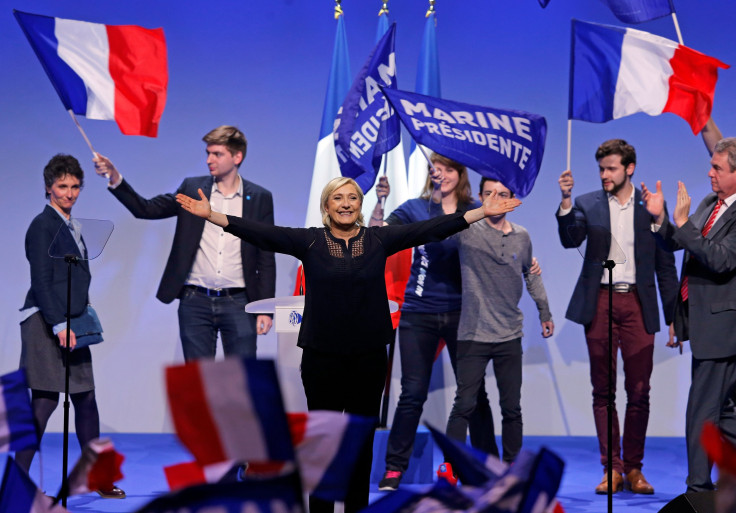Marine Le Pen Voters Worry About Jobs — Like Trump Supporters, But Young

President Donald Trump’s voter base — which skews older, low-skilled, less-educated and rural — tends to be characterized as “left behind.” Supporters of Marine Le Pen, the far-right Front National party candidate facing a runoff election in France on May 7, were largely similar, except for one characteristic: A lot of them are millennials.
Although Le Pen, 48, was projected to lose the youth vote to her 39-year-old runoff opponent Emmanuel Macron following their respective second- and first-place victories in the April 23 first-round election, two-way polls show, a different trend appeared when she faced off against 10 other candidates.
How different age groups voted in France, by @opinionway.
— Taniel (@Taniel) April 24, 2017
Le Pen < 10% among voters above 65, Fillon < 10% among voters under 34. pic.twitter.com/O1Xb1jgyTl
A late April Ifop poll indicated that 26 percent of voters under the age of 35 planned to vote for Le Pen. The youth vote runners-up, Macron and far-left first-round candidate Jean-Luc Mélenchon, often referred to as the French Bernie Sanders, stood to win 23 percent of the same age group. For the other eight candidates, young voter support fell short of double-digits. Le Pen’s strongest support came from older millennials, aged 25 to 34, 30 percent of whom said they’d vote for the Front National candidate.
She came in third, but fell behind by a wide margin among voters over the age of 65, nearly four in 10 of whom preferred former Prime Minister Francois Fillon. Another 28 percent of that cohort supported Macron and just 14 percent planned to vote for Le Pen, according to the Ifop survey. Other polls, including six-way voter intention surveys, indicated similar splits in favor between Le Pen, Macron and Mélenchon among young French people, and weak support for the FN party president among France's elderly.
The reason, according to translator, author and senior affiliate at Harvard University’s Center for European Studies Arthur Goldhammer, is the disproportionate harm that changes in the global economy have done to young French people, as well as European youth in general. France’s youth unemployment rate was the fifth-highest in the European Union last year, and hasn’t been below 20 percent since 2008.
“In some suburbs and manufacturing areas, you’ll have youth unemployment of as much as 50 percent,” Goldhammer said. He added that the northern and northeastern regions of the country, once home to booming steel and coal industries, have been in decline — not unlike the American “Rust Belt.”
Urban youth tend to prefer liberal candidates, but the disaffected young people in peripheral provinces embody the sense of being “left behind” that was common among Trump’s supporters, according to New York University history professor Edward Berenson.
“The urban-rural divide is even sharper in France” than in the U.S., he said. “There’s a lot of pretty understandable anger there.”
© Copyright IBTimes 2024. All rights reserved.












